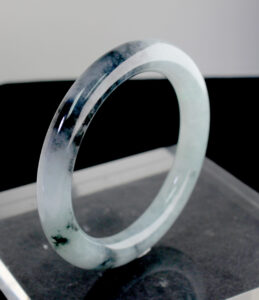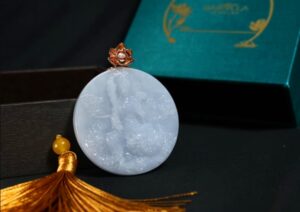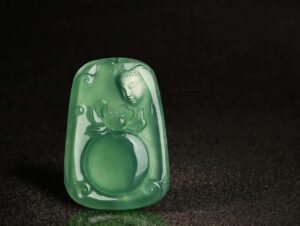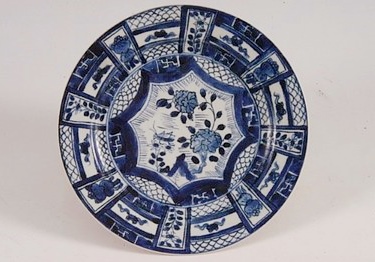
Qing Dynasty Porcelain Techniques: Blue-and-White and Underglaze Red
清代製瓷工藝特點:青花與釉裡紅
The Qing Dynasty (1644-1912) witnessed the pinnacle of Chinese porcelain artistry, particularly in blue-and-white and underglaze red techniques. These distinctive artistic achievements transformed regions like Zhejiang, Jiangsu, and Anhui into renowned porcelain capitals, attracting international admiration for their unique production methods, kiln effects, and microscopic characteristics.
清代製瓷工藝特點之青花和釉裡紅是清朝時期得到了最好發展的藝術特色之一。它以其獨特的製作工藝、窯變特點、微觀特徵等優勢,使浙江、江蘇、安徽等地成為久負盛名的瓷都,並引起了國內外的關注。
Production Process: Three Essential Steps
製作工藝:三大關鍵步驟
1. Body Preparation (製磚)
一、胎體準備(製磚)
This initial stage involved clay pounding and mold formation to create the porcelain foundation. Artisans carefully selected and processed clay to achieve the desired purity and plasticity.
此階段包括練泥與模型製作,建立瓷器基礎。工匠精選並處理黏土以達到所需純度與可塑性。
2. Firing Technique (燒成)
二、窯燒技術(燒成)
Qing kiln masters employed advanced kiln-firing technology that precisely controlled temperature and atmosphere. This expertise resulted in consistently high-quality wares with minimal defects.
清代窯工採用先進的窯燒技術,精確控制溫度與氣氛。這種專業技術產生了缺陷極少的高品質器皿。
3. Decorative Application (釉上彩)
三、裝飾技法(釉上彩)
Artists used specially modified glazes that developed their beautiful colors through high-temperature oxidation. The cobalt blue and copper red pigments required exact chemical compositions and firing conditions to achieve their characteristic hues.
藝匠使用特殊改性釉料,通過高溫氧化環境呈現美麗色彩。鈷藍與銅紅顏料需要精確的化學成分與燒製條件才能達到特有色調。
Kiln Transformation Characteristics
窯變特點
1. Technical Advancement
一、技術進步
Kiln technology evolution enabled better firing results and higher quality pieces. Improved temperature control and kiln design contributed to more predictable outcomes.
窯燒技術發展使燒成效果越來越佳,器物質量越來越高。改進的溫度控制與窯爐設計使結果更可預測。
2. Precision Enhancement
二、精度提升
Advancements like glaze shimmering effects and underglaze carving techniques allowed for exquisite detailing and refined finishes that distinguished Qing porcelain.
釉面閃光效果與釉下雕技術等進步使得瓷器精美度和細節處理更加出色,成為清代瓷器特徵。
Microscopic Characteristics
微觀特徵
Several distinctive microscopic features aid in authenticating Qing porcelain:
幾項獨特的微觀特徵有助於鑑定清代瓷器:
- Glaze Smoothness: Even, glass-like surfaces between decorative elements
釉面光滑度:裝飾元素之間均勻如玻璃的表面 - Pigment Integration: Optimal penetration between coloring materials and clay body
顏料融合度:色料與胎體之間的理想滲透 - Firing Condition: Specific vitrification patterns indicating precise temperature control
燒製狀態:顯示精確溫度控制的特定玻化 patterns
These characteristics provide crucial reference points for modern antique authentication.
這些特徵為今天的古董鑑定提供了重要參考價值。
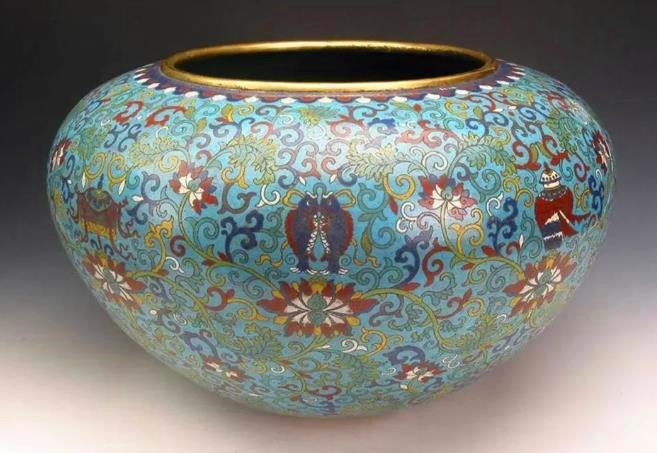
Representative Masterpieces
代表性作品
Several iconic works exemplify Qing porcelain artistry:
幾件標誌性作品體現了清代瓷器藝術:
- Hibiscus Basin: The most representative Qing piece featuring delicate famille rose enamels and hibiscus floral patterns
《芙蓉盆》:最具代表性的清代作品,採用細膩的粉彩繪製芙蓉花卉圖案 - Eight Treasures Bowl (《八寶钵》): Buddhist symbol decoration with precise underglaze techniques
《八寶钵》:佛教八寶紋飾,釉下技法精確 - Ganoderma Basin (《灵芝盆》): Auspicious fungus motifs demonstrating symbolic artistry
《灵芝盆》:吉祥靈芝紋飾,展現象徵性藝術 - Butterfly Vase (《蝴蝶瓶》): Elegant insect motifs with balanced composition
《蝴蝶瓶》:優雅蝶紋,構圖平衡
The Hibiscus Basin particularly showcases the height of Qing blue-and-white artistry through its refined painting and sophisticated color application.
《芙蓉盆》 通過精緻的繪畫與高超的施彩技術,充分展示出清代青花製瓷藝術的高度。
Cultural Significance
文化意義
Qing Dynasty blue-and-white and underglaze red porcelain represent one of the most iconic art forms in Chinese ceramic history. Their production techniques, kiln transformations, microscopic features, and artistic masterpieces continue to inspire collectors and scholars worldwide, preserving an invaluable cultural legacy.
清代青花和釉裡紅製瓷工藝成為中國古代製瓷文化傳承史上最具標誌性的藝術形式之一。其製作工藝、窯變特點、微觀特徵及代表作品等,持續啟發全球收藏家與學者,保存了無價的文化遺產。
Read More
- Collectors' Academy (136)
- Care Academy (7)
- Investment Academy (22)
- Jade Crafting Techniques (28)
- Michelle Au: The Gemstone Luminary (11)

